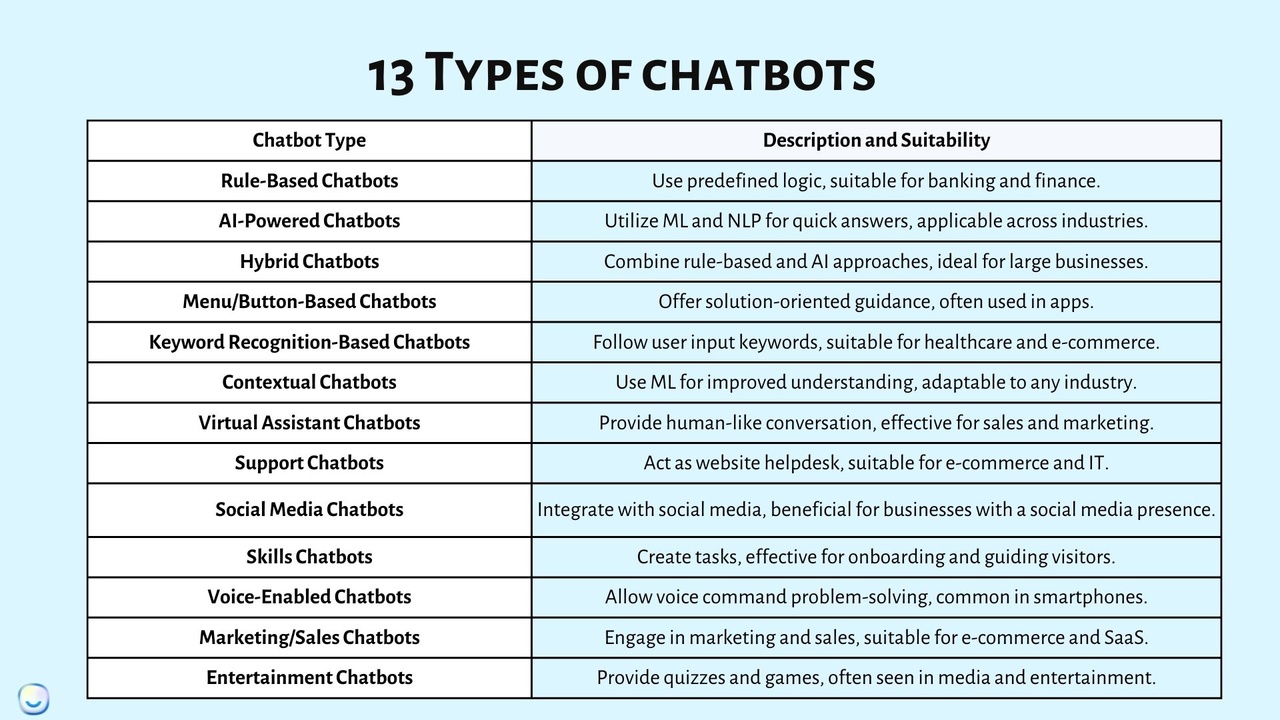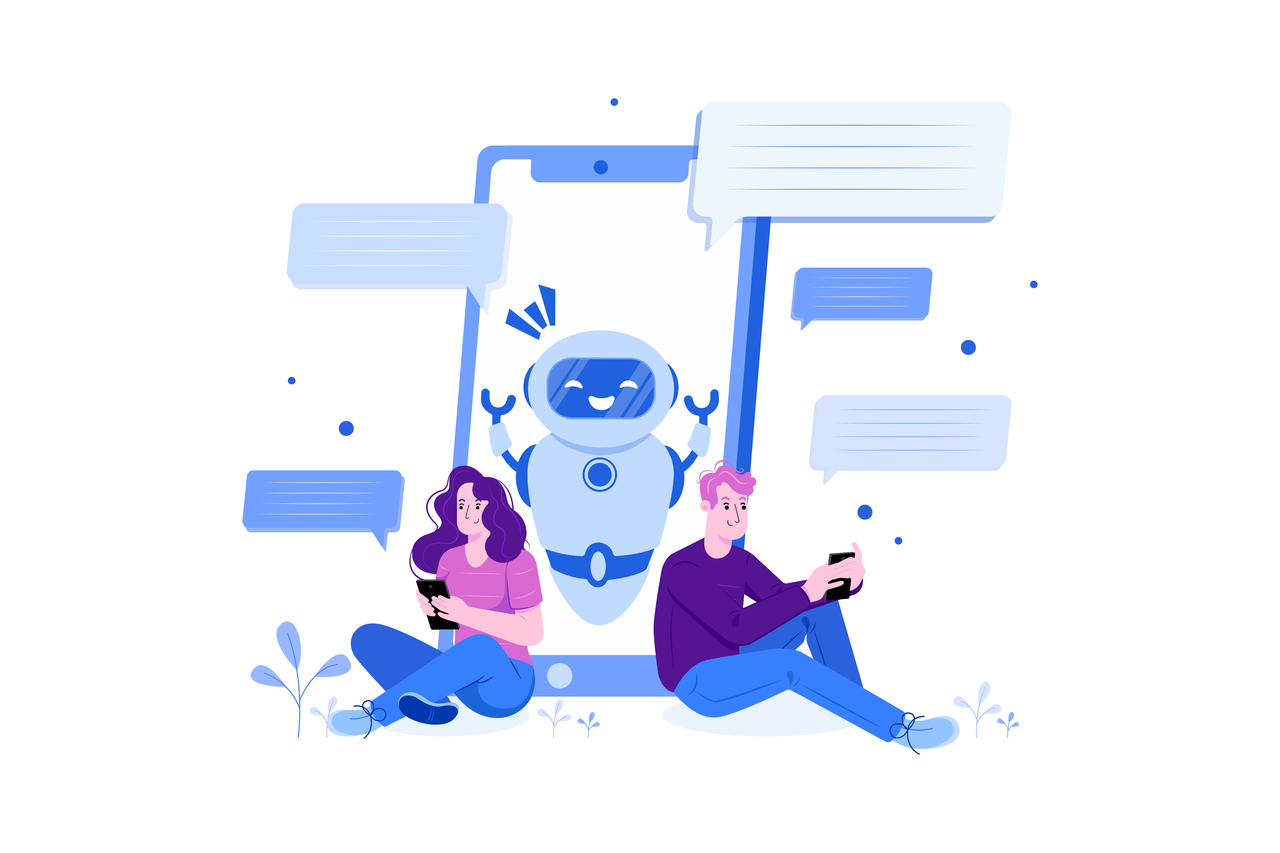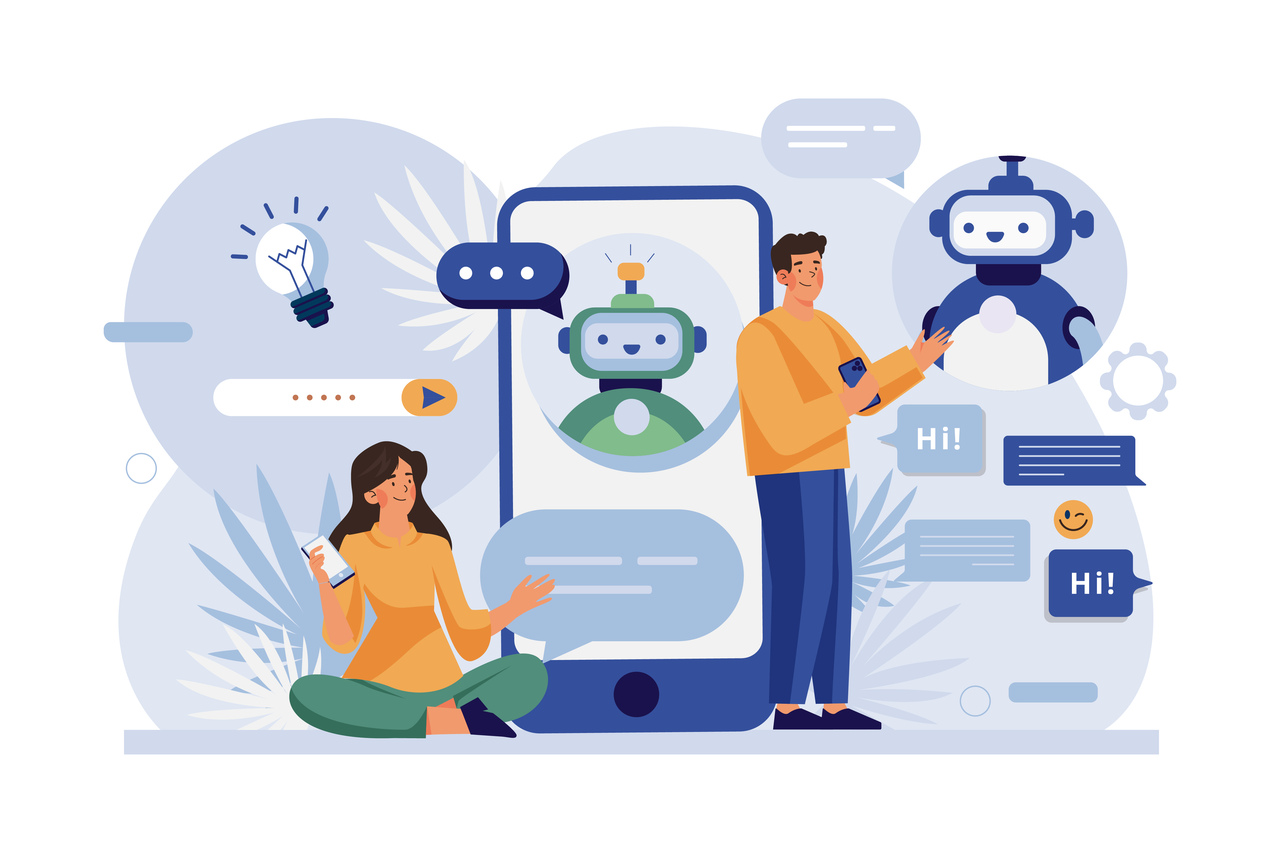
13 Types of Chatbots and How to Find the Right One For You
The business world is versatile. You need to catch up on everything, everywhere, all at once ;)
Therefore, to face your customers, there are different types of chatbots that can help you cover the customer service part of your business.
Since we are in an evolving world of changing facilities, you need to decide the right chatbot type for you by considering your needs, customers, expectations, and services.
In this chatbot guide, we have discovered 13 types of chatbots by searching and examining in detail how they work, where they can be seen, and which businesses can use them.
Enjoy your reading, and do not forget to find the right type for you to start reviving your business.
What is Chatbot?
A chatbot is a software program that simulates human conversation by understanding the needs and queries of customers in an automated way.
Chatbots are mostly effective in offering assistance, helpful information, and personalized user experience.
All types of chats are valuable for businesses since they are generally the bridge between the customers and the business. However, chatbots are the white knights of businesses nowadays.
That is why we discover so many benefits when we pay attention to the importance of chatbots.
Overviewing from a broader perspective, chatbots help save time for the business.
Because your customers will be able to find solutions to their problems with chatbots, on the one hand, you can deal with other needs of your business.

Secondly, chatbots offer an exclusive experience for each customer. We can assume that you have a promising brand to promote, yet every rose has its thorns, and it is not so possible to catch too many customers having an issue at the same time.
Therefore, chatbots remember the details and instructions you give, then deal with the problems of customers delicately.
Another important point about the significance of chatbots is that chatbots help reduce costs. None of us want to spend money recklessly when there is a chance to save, right?
By using the impact of chatbots on the customer service side, you will be able to deal with other departments and spend an average amount of money.
We can count the benefits of chatbots more and more; however, we already have an article that we have done, and you can take a look at 12 Benefits of AI in Customer Service to Guide Your Business to comprehend the importance of chatbots in detail.
You may also read:
AI Chatbots vs. Human Customer Service: A Comparative Analysis
13 Types of Chatbots for Business Growth
Before starting to explore, we should inform you that there are different types of chatbots, and their names might differ depending on their area of specialization.
Therefore, we collect the most important types of chatbots for you, and we hope that you can gain knowledge about the types you have targeted.

1. Rule-Based Chatbots (Linguistic-Based Chatbots)
Rule-Based Chatbots or Linguistic-Based Chatbots depend on the conditions, combinations, and logic you have provided. That means these kinds of chatbots will work based on what you maintain for their systems.
Before starting to use rule-based chatbots, you need to build their infrastructure with your own conditions. Then, whenever a query from a customer appears on the chats, they will automatically work by searching for related words, synonyms, or similarities.
Even you have a chance to connect your customers with your team as well if you do not want to leave everything to a chatbot.
In the process, your customers will start the chat and ask questions; your conditions will answer depending on what the questions include. If your customers are not satisfied with the answers, they can connect with you at the end of the chat.
The more the queries match, the more proper and faster the answers will be. Thus, you will be dealing with the linguistic part of your customers’ conversations to provide this automation flow.
The Disadvantage of Rule-Based Chatbots:
- If the queries do not match the predefined rules, it will prolong the response time of the chats.
- The conditioning and adaptation process can take time for the development process of chats.
Which Businesses Can Use Rule-Based Chatbots?
Institutions in banking and finance, travel, education, and human resources are more prone to use chatbots since they are more proper for their business goals.

2. AI-Powered Chatbots
With the rising impact of artificial intelligence, AI-Powered chatbots have gained great significance for businesses.
AI-Powered chatbots work with machine learning (ML) and natural language processing (NLP) in chatbots. That’s how they can create quick and appropriate answers.
The most important thing about AI-powered chatbots is that they can learn, think, evaluate, and respond based on an algorithm.
Thanks to their high-level capabilities, these chatbots recognize user replies, previous chats, documentation, user intent, and, more importantly, user profiles.
Hence, it is possible for AI-powered chatbots to present more human-like conversations than any other chatbots in this list.
The Disadvantage of AI-Powered Chatbots
- Although AI-powered chatbots possibly give the most accurate answers to customers, there may be a need for human intervention from time to time.
Which Businesses Can Use AI-Powered Chatbots?
It is possible for businesses from all sectors and industries to use AI-powered chatbots because businesses create the flow according to themselves.
You may also read:
Top Use Cases with Imported Custom Content AI Chatbots
3. Hybrid Chatbots
Hybrid chatbots combine rule-based chatbots and AI-powered chatbots at the same time by benefiting from human intervention and intelligent-powered service.
When it comes to its working system, the AI can take the initiative to lead the chat and try to find the solution to what customers demand or ask. It generally starts with scanning the previous and current information in the system with machine learning.
In case of any ambiguity that cannot be solved with the capabilities of AI, then the chat is conveyed to the customer service team, and they receive the rest of the chat.
So, it is very possible to say that you will get the best of both worlds by preferring hybrid chatbots for your business.
The Disadvantage of Hybrid Chatbots
Since there is more than one chatbot, the setup process of hybrid chatbots can take much longer than the other chatbots.
Which Businesses Can Use Hybrid Chatbots?
Hybrid chatbots are mostly for large businesses because the results will be more convenient for businesses with lots of workloads. Also, if the industry of your business needs human expertise, hybrid chatbots can be the right choice.

4. Menu/Button-Based Chatbots
Menu/Button-based chatbots are also known as guided or structured chatbots.
Menu/Button-based chatbots use menus and buttons to direct customers during the chat. They are more solution-oriented and direct with their guidance.
The customers guide chats by clicking the menus and buttons that are pre-programmed. So, you provide space for customer interactions and consistent UX.
With the tree hierarchy used in these menu/button-based chatbots, customers progress by selecting choices.
The Disadvantage of Menu/Button-Based Chatbots
- The chat response time can be short, but it takes time to reach the exact solution since the chatbots sometimes cannot recognize the query directly.
Which Businesses Can Use Menu/Button-Based Chatbots?
Nowadays, we come across menu/button-based chatbots on apps when we order something and wait for its delivery process. Therefore, it is proper for businesses that have the same or similar business goals as apps.
5. Keyword Recognition-Based Chatbots
Keyword recognition-based chatbots are more specific in their use capability since they follow the keywords in the user input and decide which topic to mention.
Like many other chatbots, keyword recognition-based chatbots use NLP for tracking keywords.
In order not to avoid mentioning keyword recognition-based chatbots are among the most efficient, simple, and controllable chatbots, so you can keep track of their performance easily.
It is common to see live chat with these kinds of chatbots since it is necessary to provide assistance, and the chatbot may fail to understand and answer.
The Disadvantage of Keyword Recognition-Based Chatbots
- If so many uses of similar keywords exist, chatbots may fail to understand the difference and fall short of giving accurate responses to customers.
Which Businesses Can Use Keyword Recognition-Based Chatbots?
Healthcare, hospitality, food services, automotive, real estate, e-commerce, and many more industries can use keyword recognition-based chatbots since it is a chatbot type to adjust.

6. Contextual Chatbots
Contextual chatbots use machine learning to track the context of the current and previous chats.
There is an improved way of understanding and multi-turn for the conversations with contextual chatbots. Therefore, it is possible to see proactive assistance for customers.
It might sound similar to other chatbot types; however, no chatbots but contextual ones control the previous chats, orders, and options that belong to customers.
The Disadvantage of Contextual Chatbots
- Though it is not too often encountered, contextual chatbots may have limitations of contextual understanding that cause the failure to solve the issue.
Which Businesses Can Use Contextual Chatbots?
There are no limitations to use for contextual chatbots since the context may vary based on the industry.
7. Virtual Assistant Chatbots
Virtual Assistant Chatbots offer help and human-like conversation in virtual environments, and this is the exact difference between other types of chatbots.
By benefiting from ML, AI, and NLP, virtual assistant chatbots assist your customers personally since they can also tailor responses properly.
Besides, there is the possibility of integrating platforms into your virtual assistant chatbots. Then, you can automate the process as well if you want to further the capabilities of them.
The Disadvantage of Virtual Assistant Chatbots
- Virtual assistants are effective, but there is no human intervention, and they totally depend on an internet connection.
Which Businesses Can Use Virtual Assistant Chatbots?
Mostly sales and marketing, retrieving information, and appointments are effective areas in which virtual assistant chatbots can help.

8. Support Chatbots
Support chatbots are the most common chatbots because we see them on almost every website to welcome and guide us.
These chatbots are aware of the frequently asked questions and documentation that already exist and act as helpdesk for your customers.
Support chatbots are more solution-oriented while troubleshooting customers’ queries.
The Disadvantage of Support Chatbots
- Support chatbots totally depend on predefined information and cannot recognize any other keyword, context, or chats.
Which Businesses Can Use Support Chatbots?
E-commerce business support consists of support chatbots, but IT and Software businesses are apt to make use of them as well.
9. Social Media Chatbots
Social media chatbots are chatbots that can integrate with other social media platforms, like WhatsApp, Facebook, Instagram, and so on.
We can say social media chatbots are more commonplace for newly-starting businesses and developing ones. However, if the business uses omnichannel support, it is probable to mention the use of social media chatbots as well.
Also, it is an undeniable fact that social media chatbots make customers feel most sincere, and it helps long-lasting relationships.
The Disadvantage of Social Media Chatbots
- Since social media is a part of the brand, social media chatbots can affect the brand's reputation if the necessary update and control are missing.
Which Businesses Can Use Social Media Chatbots?
Social media chatbots can be used by any type of industry that has a social media presence and a social media strategy.

10. Skills Chatbots
Skills chatbots create tasks and to-dos for visitors or customers.
They can be generally seen in the onboarding process of new products or tools, and they are effective in guiding visitors.
Also, when customers have a demand, they can carry them out. Therefore, we can consider them as equerry on both sides.
The Disadvantage of Skills Chatbots
- Skills chatbots have a lack of flexibility since their main aim is to perform the demands only.
Which Businesses Can Use Skills Chatbots?
In addition to tool services, there are other industries to use skills chatbots, like food and beverage, e-commerce, financial services, and more.
11. Voice-Enabled Chatbots
Voice-enabled chatbots help businesses elevate their work one step further because customers are able to solve their problems through voice-enabled devices.
Like Apple’s Siri, Amazon’s Alexa, or Google’s Google Assistant, businesses can now act with the help of voice and present a more personalized experience for their customers.
Voice-enabled chatbots use speech recognition, and customers communicate by commanding recommendations.
The Disadvantage of Voice-Enabled Chatbots
- The adaptation of voice-enabled technology can take time and may cause inaccuracy in the listening experience.
Which Businesses Can Use Voice-Enabled Chatbots?
Lately, it is more common to use voice-enabled chatbots with smartphones, smart homes, and the automotive industry.

12. Marketing/ Sales Chatbots
Marketing/ sales chatbots are more specific because they directly engage with customers through marketing and sales activities.
If your aims are to generate leads and increase your sales conversion rate, marketing chatbots are used to promote your brand and your products.
Also, marketing chatbots help both purchasing process and provide what customer queries have.
The Disadvantage of Marketing/ Sales Chatbots
- If the customers’ input has complex interactions, marketing chatbots might be unable to provide the necessary information.
Which Businesses Can Use Marketing/ Sales Chatbots?
E-commerce and SaaS can be the most proper industry for using marketing/sales chatbots.
13. Entertainment Chatbots
Entertainment chatbots are used to provide quizzes, games, jokes, and storytelling to engage with customers.
Though it is not the main aim of the business, entertainment chatbots present a more sincere way of assisting visitors.
It is important to adjust entertainment chatbots based on the brand identity and expectations of customers.
The Disadvantage of Entertainment Chatbots
- Entertainment chatbots may sometimes experience technical difficulties.
Which Businesses Can Use Entertainment Chatbots?
Media and entertainment areas are more apt to use entertainment chatbots to promote their events and products.

Conclusion
When we have explored all the types of chatbots for the list, we only aim for the benefits of businesses from different types.
And while there are many different types of chatbots to use and benefit from, you should also choose your own type of chatbot.
Since the world is evolving and time is more precious than ever, you can manage your time and money with one move.
Frequently Asked Questions
After revealing the types of chatbots, we will answer some questions now!
1. Can different types of chatbots be combined or used together?
Yes, it is possible to combine different types of chatbots to create more comprehensive and versatile chatbot systems. For example, a chatbot can incorporate both AI-powered capabilities for natural language understanding and rule-based components for specific task automation.
2. Can chatbots be integrated with existing systems and applications?
Yes, chatbots can be integrated with existing systems and applications through APIs. This allows them to access data and functionalities from other software and provide seamless interactions for users.
3. How can chatbots be trained or improved over time?
Chatbots can be trained and improved through machine learning techniques. They can learn from user interactions, feedback, and data to enhance their understanding, accuracy, and response generation capabilities.
4. Can chatbots be deployed on multiple platforms?
Yes, chatbots can be deployed on multiple platforms, such as websites, messaging apps, mobile applications, and voice assistant devices. This allows businesses to reach users through their preferred channels of communication.






